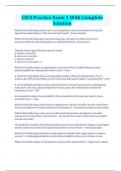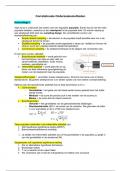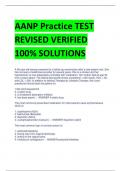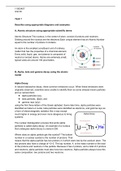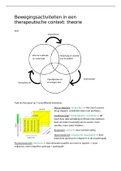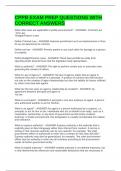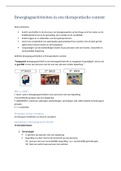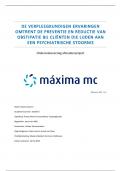Structured Cabling
CHAPTER 1
An Introduction to Networking . . . . . . . . . . . . . . . . . . . . . . . . . . . . . . . . . . . . . . . . . . . . . . . . . . . . . . 1
CHAPTER 2
Networking Standards and the OSI Model. . . . . . . . . . . . . . . . . . . . . . . . . . . . . . . . . . . . . . . . . . . . . 39
CHAPTER 3
Transmission Basics and Networking Media. . . . . . . . . . . . . . . . . . . . . . . . . . . . . . . . . . . . . . . . . . . . 73
CHAPTER 4
Introduction to TCP/IP Protocols. . . . . . . . . . . . . . . . . . . . . . . . . . . . . . . . . . . . . . . . . . . . . . . . . . . . 135
CHAPTER 5
Topologies and Ethernet Standards . . . . . . . . . . . . . . . . . . . . . . . . . . . . . . . . . . . . . . . . . . . . . . . . . 193
CHAPTER 6
Network Hardware . . . . . . . . . . . . . . . . . . . . . . . . . . . . . . . . . . . . . . . . . . . . . . . . . . . . . . . . . . . . . 237
CHAPTER 7
WANs and Remote Connectivity . . . . . . . . . . . . . . . . . . . . . . . . . . . . . . . . . . . . . . . . . . . . . . . . . . . 297
COS2626
CHAPTER 8
Wireless Networking . . . . . . . . . . . . . . . . . . . . . . . . . . . . . . . . . . . . . . . . . . . . . . . . . . . . . . . . . . . . 363
COMPUTER
CHAPTER 9 NETWORKS
COMPLETE STUDY NOTES
Network Operating Systems . . . . . . . . . . . . . . . . . . . . . . . . . . . . . . . . . . . . . . . . . . . . . . . . . . . . . . 421
CHAPTER 10
2022In-Depth TCP/IP Networking. . . . . . . . . . . . . . . . . . . . . . . . . . . . . . . . . . . . . . . . . . . . . . . . . . . . . . . 485
CHAPTER 11
Voice and Video Over IP. . . . . . . . . . . . . . . . . . . . . . . . . . . . . . . . . . . . . . . . . . . . . . . . . . . . . . . . . . 531
CHAPTER 14
Ensuring Integrity and Availability. . . . . . . . . . . . . . . . . . . . . . . . . . . . . . . . . . . . . . . . . . . . . . . . . . 683
iii
,2Chapter 1
• Client – devices and users that connects to the network
• Server—A computer on the network that manages shared resources; servers usually have more processing
power, memory, and hard disk space than clients.
• Workstation—A personal computer (such as a desktop or laptop); most clients are workstation computers.
• NIC (network interface card) —The device inside a computer that connects a computer to the network
media, thus allowing it to communicate with other computers; many companies (such as 3Com, IBM, Intel,
SMC, and Xircom)
• NOS (network operating system) —The software that runs on a server and enables the server to manage
data, users, groups, security, applications, and other networking functions. Examples Microsoft Windows
Server 2003 or Windows Server 2008, and Mac OS X Server.
• Host—A computer that enables resource sharing by other computers on the same network
• Connectivity device—A specialized device that allows multiple networks or multiple parts of one network
to connect and exchange data. A client/server network can operate without connectivity devices. However,
medium- and large-sized LANs use them to extend the network and to connect with WANs.
• Segment—A part of a network. Usually, a segment is composed of a group of nodes that use the same
communications channel for all their traffic.
• Backbone—The part of a network to which segments and significant shared devices (such as routers,
switches, and servers) connect. A backbone is sometimes referred to as “a network of networks, ” because
of its role in interconnecting smaller parts of a LAN or WAN.
• Topology—The physical layout of a computer network. Topologies vary according to the needs of the
organization and available hardware and expertise. Networks can be arranged in a ring, bus, or star
formation, and the star formation is the most common.
• Protocol—A standard method or format for communication between networked devices. A protocol is
simply a set of instructions written by a programmer to perform a function.
• Data packets—The distinct units of data that are exchanged between nodes on a network. Breaking a large
stream of data into many packets allows a network to deliver that data more efficiently and reliably.
• Transmission media —The means through which data is transmitted and received. Transmission media
may be physical, such as wire or cable, or atmospheric (wireless), such as radio waves. Figure 1-8 shows
several examples of transmission media.
Chapter Summary
■ A network is a group of computers and other devices (such as printers) that are connected by some type of
transmission media, such as copper or fibre-optic cable or the atmosphere (wireless transmission).
■ Networks enable multiple users to share devices and data. Sharing resources saves time and money.
Networks also allow you to manage, or administer, resources on multiple computers from a central
location.
■ In a peer-to-peer network, every computer can communicate directly with every other computer. By
default, no computer on a peer-to-peer network has more authority than another. However, each computer
can be configured to share only some of its resources and keep other resources inaccessible.
■ Traditional peer-to-peer networks are usually simple and inexpensive to set up. However, they are not
necessarily flexible or secure.
■ Client/server networks rely on a centrally administered server (or servers) to manage shared resources for
multiple clients. In this scheme, the server has greater authority than the clients, which are typically
desktop or laptop workstations.
,3■ Client/server networks are more complex and expensive to install than peer-to-peer networks. However,
they are more easily managed, more scalable, and typically more secure. They are by far the more popular
■ Servers typically possess more processing power, hard disk space, and memory than client computers. To
manage access to and use of shared resources, among other centralized functions, a server requires a
network operating system.
■ A LAN (local area network) is a network of computers and other devices that is confined to a relatively
small space, such as one building or even one office.
■ LANs can be interconnected to form WANs (wide area networks), which traverse longer distances and,
therefore, require slightly different transmission methods and media than LANs. The Internet is the largest
example of a WAN.
■ Client/server networks share some common elements, including clients, servers, workstations,
transmission media, connectivity devices, protocols, addressing, topology, NICs, data packets, network
operating systems, hosts, backbones, segments, and nodes.
■ Although e-mail is the most visible network service, networks also provide services for printing, file
sharing, Internet access, remote access capabilities, communicating in multiple forms, and network
management.
■ File and print services provide the foundation for networking. They enable multiple users to share data,
applications, storage areas, and printers.
■ Networks use access services to allow remote users to connect to the network or network users to connect
to machines outside the network.
■ Communications services provided by networks include e-mail, telephone, video, fax, messaging, and
voice mail.
■ Mail services (running on mail servers) allow users on a network to exchange and store e-mail. Most mail
packages also provide filtering, routing, scheduling, notification, and connectivity with other mail systems.
■ Internet services such as World Wide Web servers and browsers, file transfer capabilities, addressing
schemes, and security filters enable organizations to connect to and use the global Internet.
, 4
The OSI Model
OSI (Open Systems Interconnection) model used for understanding and developing computer-to-computer
communications over a network.
Divides network communications into seven layers: Physical, Data Link, Network, Transport, Session,
Presentation, and Application.
The OSI model is a theoretical representation of what happens between two nodes communicating on a
network.
Programmers Dare Not Throw Salty Pretzels Away
1 Physical layer
• Function: Manages hardware connections
• Protocols at the Physical layer accept frames from the Data Link layer and generate signals as
changes in voltage at the NIC. (Signals are made of electrical impulses that, when issued in a certain
pattern, represent information.) When the network uses copper as its transmission medium, these
signals are also issued over the wire as voltage. In the case of fiber-optic cable, signals are issued as
light pulses. When a network uses wireless transmission, the signals are sent from antennas as
electromagnetic waves.
• Physical layer protocols also set the data transmission rate and monitor data error rates. However,
even if they recognize an error, they cannot perform error correction. When you install a NIC in
your desktop PC and connect it to a cable, you are establishing the foundation that allows the
computer to be networked. In other words, you are providing a Physical layer.
• Simple connectivity devices such as hubs and repeaters operate at the Physical layer. NICs operate
at both the Physical layer and at the Data Link layer.
2 Data Link layer
• The primary function is to divide data they receive from the Network layer into distinct frames that can then
be transmitted by the Physical layer.
• A frame is a structured package for moving data that includes not only the raw data, or “payload,” but also the
sender’s and receiver’s network addresses, and error checking and control information.
• The Data Link layer protocols find out that information has been dropped and ask the first computer to
retransmit its message—through a process called error checking.
• Error checking is accomplished by a 4-byte FCS (frame check sequence) field, whose purpose is to ensure that
the data at the destination exactly matches the data issued from the source. When the source node transmits
the data, it performs an algorithm (or mathematical routine) called a CRC (cyclic redundancy check). CRC
takes the values of all of the preceding fields in the frame and generates a unique 4-byte number, the FCS.
When the destination node receives the frame, its Data Link layer services unscramble the FCS via the same
CRC algorithm and ensure that the frame’s fields match their original form. If this comparison fails, the
receiving node assumes that the frame has been damaged in transit and requests that the source node
retransmit the data. Note that the receiving node is responsible for detecting errors.
• Data Link layer gives instruction to retransmit the information if acknowledgement has not arrived. The Data
Link layer never tries to figure out what went wrong.
• Another communications mishap that might occur on a busy network is a flood of communication requests.
The Data Link layer controls the flow of this information, allowing the NIC to process data without error.
• In fact, the IEEE has divided the Data Link layer into two sublayers. The reason for this change was to allow
higher layer protocols to interact with Data Link layer protocols without regard for Physical layer
specifications.
× The upper sublayer of the Data Link layer, called the LLC (Logical Link Control), provides an interface to the
Network layer protocols, manages flow control, and issues requests for transmission for data that has
suffered errors.
CHAPTER 1
An Introduction to Networking . . . . . . . . . . . . . . . . . . . . . . . . . . . . . . . . . . . . . . . . . . . . . . . . . . . . . . 1
CHAPTER 2
Networking Standards and the OSI Model. . . . . . . . . . . . . . . . . . . . . . . . . . . . . . . . . . . . . . . . . . . . . 39
CHAPTER 3
Transmission Basics and Networking Media. . . . . . . . . . . . . . . . . . . . . . . . . . . . . . . . . . . . . . . . . . . . 73
CHAPTER 4
Introduction to TCP/IP Protocols. . . . . . . . . . . . . . . . . . . . . . . . . . . . . . . . . . . . . . . . . . . . . . . . . . . . 135
CHAPTER 5
Topologies and Ethernet Standards . . . . . . . . . . . . . . . . . . . . . . . . . . . . . . . . . . . . . . . . . . . . . . . . . 193
CHAPTER 6
Network Hardware . . . . . . . . . . . . . . . . . . . . . . . . . . . . . . . . . . . . . . . . . . . . . . . . . . . . . . . . . . . . . 237
CHAPTER 7
WANs and Remote Connectivity . . . . . . . . . . . . . . . . . . . . . . . . . . . . . . . . . . . . . . . . . . . . . . . . . . . 297
COS2626
CHAPTER 8
Wireless Networking . . . . . . . . . . . . . . . . . . . . . . . . . . . . . . . . . . . . . . . . . . . . . . . . . . . . . . . . . . . . 363
COMPUTER
CHAPTER 9 NETWORKS
COMPLETE STUDY NOTES
Network Operating Systems . . . . . . . . . . . . . . . . . . . . . . . . . . . . . . . . . . . . . . . . . . . . . . . . . . . . . . 421
CHAPTER 10
2022In-Depth TCP/IP Networking. . . . . . . . . . . . . . . . . . . . . . . . . . . . . . . . . . . . . . . . . . . . . . . . . . . . . . . 485
CHAPTER 11
Voice and Video Over IP. . . . . . . . . . . . . . . . . . . . . . . . . . . . . . . . . . . . . . . . . . . . . . . . . . . . . . . . . . 531
CHAPTER 14
Ensuring Integrity and Availability. . . . . . . . . . . . . . . . . . . . . . . . . . . . . . . . . . . . . . . . . . . . . . . . . . 683
iii
,2Chapter 1
• Client – devices and users that connects to the network
• Server—A computer on the network that manages shared resources; servers usually have more processing
power, memory, and hard disk space than clients.
• Workstation—A personal computer (such as a desktop or laptop); most clients are workstation computers.
• NIC (network interface card) —The device inside a computer that connects a computer to the network
media, thus allowing it to communicate with other computers; many companies (such as 3Com, IBM, Intel,
SMC, and Xircom)
• NOS (network operating system) —The software that runs on a server and enables the server to manage
data, users, groups, security, applications, and other networking functions. Examples Microsoft Windows
Server 2003 or Windows Server 2008, and Mac OS X Server.
• Host—A computer that enables resource sharing by other computers on the same network
• Connectivity device—A specialized device that allows multiple networks or multiple parts of one network
to connect and exchange data. A client/server network can operate without connectivity devices. However,
medium- and large-sized LANs use them to extend the network and to connect with WANs.
• Segment—A part of a network. Usually, a segment is composed of a group of nodes that use the same
communications channel for all their traffic.
• Backbone—The part of a network to which segments and significant shared devices (such as routers,
switches, and servers) connect. A backbone is sometimes referred to as “a network of networks, ” because
of its role in interconnecting smaller parts of a LAN or WAN.
• Topology—The physical layout of a computer network. Topologies vary according to the needs of the
organization and available hardware and expertise. Networks can be arranged in a ring, bus, or star
formation, and the star formation is the most common.
• Protocol—A standard method or format for communication between networked devices. A protocol is
simply a set of instructions written by a programmer to perform a function.
• Data packets—The distinct units of data that are exchanged between nodes on a network. Breaking a large
stream of data into many packets allows a network to deliver that data more efficiently and reliably.
• Transmission media —The means through which data is transmitted and received. Transmission media
may be physical, such as wire or cable, or atmospheric (wireless), such as radio waves. Figure 1-8 shows
several examples of transmission media.
Chapter Summary
■ A network is a group of computers and other devices (such as printers) that are connected by some type of
transmission media, such as copper or fibre-optic cable or the atmosphere (wireless transmission).
■ Networks enable multiple users to share devices and data. Sharing resources saves time and money.
Networks also allow you to manage, or administer, resources on multiple computers from a central
location.
■ In a peer-to-peer network, every computer can communicate directly with every other computer. By
default, no computer on a peer-to-peer network has more authority than another. However, each computer
can be configured to share only some of its resources and keep other resources inaccessible.
■ Traditional peer-to-peer networks are usually simple and inexpensive to set up. However, they are not
necessarily flexible or secure.
■ Client/server networks rely on a centrally administered server (or servers) to manage shared resources for
multiple clients. In this scheme, the server has greater authority than the clients, which are typically
desktop or laptop workstations.
,3■ Client/server networks are more complex and expensive to install than peer-to-peer networks. However,
they are more easily managed, more scalable, and typically more secure. They are by far the more popular
■ Servers typically possess more processing power, hard disk space, and memory than client computers. To
manage access to and use of shared resources, among other centralized functions, a server requires a
network operating system.
■ A LAN (local area network) is a network of computers and other devices that is confined to a relatively
small space, such as one building or even one office.
■ LANs can be interconnected to form WANs (wide area networks), which traverse longer distances and,
therefore, require slightly different transmission methods and media than LANs. The Internet is the largest
example of a WAN.
■ Client/server networks share some common elements, including clients, servers, workstations,
transmission media, connectivity devices, protocols, addressing, topology, NICs, data packets, network
operating systems, hosts, backbones, segments, and nodes.
■ Although e-mail is the most visible network service, networks also provide services for printing, file
sharing, Internet access, remote access capabilities, communicating in multiple forms, and network
management.
■ File and print services provide the foundation for networking. They enable multiple users to share data,
applications, storage areas, and printers.
■ Networks use access services to allow remote users to connect to the network or network users to connect
to machines outside the network.
■ Communications services provided by networks include e-mail, telephone, video, fax, messaging, and
voice mail.
■ Mail services (running on mail servers) allow users on a network to exchange and store e-mail. Most mail
packages also provide filtering, routing, scheduling, notification, and connectivity with other mail systems.
■ Internet services such as World Wide Web servers and browsers, file transfer capabilities, addressing
schemes, and security filters enable organizations to connect to and use the global Internet.
, 4
The OSI Model
OSI (Open Systems Interconnection) model used for understanding and developing computer-to-computer
communications over a network.
Divides network communications into seven layers: Physical, Data Link, Network, Transport, Session,
Presentation, and Application.
The OSI model is a theoretical representation of what happens between two nodes communicating on a
network.
Programmers Dare Not Throw Salty Pretzels Away
1 Physical layer
• Function: Manages hardware connections
• Protocols at the Physical layer accept frames from the Data Link layer and generate signals as
changes in voltage at the NIC. (Signals are made of electrical impulses that, when issued in a certain
pattern, represent information.) When the network uses copper as its transmission medium, these
signals are also issued over the wire as voltage. In the case of fiber-optic cable, signals are issued as
light pulses. When a network uses wireless transmission, the signals are sent from antennas as
electromagnetic waves.
• Physical layer protocols also set the data transmission rate and monitor data error rates. However,
even if they recognize an error, they cannot perform error correction. When you install a NIC in
your desktop PC and connect it to a cable, you are establishing the foundation that allows the
computer to be networked. In other words, you are providing a Physical layer.
• Simple connectivity devices such as hubs and repeaters operate at the Physical layer. NICs operate
at both the Physical layer and at the Data Link layer.
2 Data Link layer
• The primary function is to divide data they receive from the Network layer into distinct frames that can then
be transmitted by the Physical layer.
• A frame is a structured package for moving data that includes not only the raw data, or “payload,” but also the
sender’s and receiver’s network addresses, and error checking and control information.
• The Data Link layer protocols find out that information has been dropped and ask the first computer to
retransmit its message—through a process called error checking.
• Error checking is accomplished by a 4-byte FCS (frame check sequence) field, whose purpose is to ensure that
the data at the destination exactly matches the data issued from the source. When the source node transmits
the data, it performs an algorithm (or mathematical routine) called a CRC (cyclic redundancy check). CRC
takes the values of all of the preceding fields in the frame and generates a unique 4-byte number, the FCS.
When the destination node receives the frame, its Data Link layer services unscramble the FCS via the same
CRC algorithm and ensure that the frame’s fields match their original form. If this comparison fails, the
receiving node assumes that the frame has been damaged in transit and requests that the source node
retransmit the data. Note that the receiving node is responsible for detecting errors.
• Data Link layer gives instruction to retransmit the information if acknowledgement has not arrived. The Data
Link layer never tries to figure out what went wrong.
• Another communications mishap that might occur on a busy network is a flood of communication requests.
The Data Link layer controls the flow of this information, allowing the NIC to process data without error.
• In fact, the IEEE has divided the Data Link layer into two sublayers. The reason for this change was to allow
higher layer protocols to interact with Data Link layer protocols without regard for Physical layer
specifications.
× The upper sublayer of the Data Link layer, called the LLC (Logical Link Control), provides an interface to the
Network layer protocols, manages flow control, and issues requests for transmission for data that has
suffered errors.

